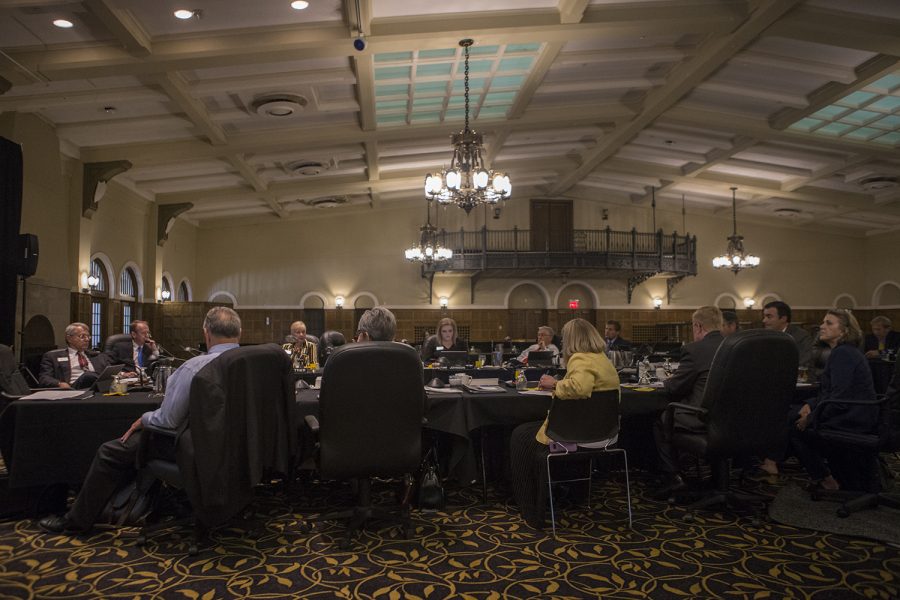Anticipated decline in national enrollment to affect resident enrollment in upcoming years
The state Board of Regents heard a presentation on enrollment trends for the three universities over the past 10 years, and predictions for how an anticipated national enrollment decline will affect those numbers.
Regents listen during the state Board of Regents meeting on Sept. 12, 2018 in the IMU Main Lounge.
November 14, 2019
The state Board of Regents heard a presentation on Thursday that revealed how an anticipated decline in national enrollment will impact Iowa universities.
The overall enrollment at the regent universities has decreased by 3.5 percent for academic year 2019-2020. The University of Iowa saw the smallest decrease by 1.3 percent, compared to higher rates of decline at Iowa State University and the University of Northern Iowa.
As previously reported by The Daily Iowan, the UI was the only regent university this academic year to see an increase in new freshmen enrollment. The class of 2023 was reported as being 103 students larger than the class of 2022.
Jason Pontius, regent associate chief academic officer, highlighted a few key areas of improvement the universities have seen during the Thursday regents’ meeting.
Enrollment of students who identify as an ethnic minority has increased from 10 percent in 2010 to 15.6 percent for this academic year, said Pontius.
RELATED: UI the only Iowa regent university to report enrollment spike in first-year class
There has also been steady growth in the number of undergraduate students in STEM majors, Pontius added, but the gap in male and female enrollment in the field has remained consistent over the years.
A majority of the metrics reported to the federal level and regents’ level are focused on the undergraduate student population, he stressed, because undergraduates make up 80 to 81 percent of total enrollment. Even though enrollment has fluctuated over the years, the percentage of undergraduates that make up the university population has remained consistent, Pontius said.
Fifty-three percent of the students enrolled at the regent universities are undergraduate Iowa residents, Pontius said. He also reported that 86.7 percent of Iowa graduates stayed in-state for college during the 2017-2018 academic year.
“Other good news is that most of our students stay in state,” he said. “We’re fairly blessed in that sense, and this number has been very consistent over the last couple of years.”
Projected data regarding the percentage of Iowa high school graduates of certain ethnic and racial minorities revealed a decrease in the percentage of white graduates, he said, but the total percentage remains the same with increases in minority graduates, he said.
Based on the national trends predicted by Nathan Grawe in his book Demographics and the Demand for Higher Education, Iowa has seen a large fluctuation in the number of freshman residents attending the regent universities beginning in 2020, Pontius said. These are rough estimates of future data, he added.
According to the Higher Education Demand Index, the national number of students of college age will drop below 4 million by 2029. The number will peak at 4.5 million by 2025 before sharply declining, according to data in Pontius’ presentation.
“It doesn’t really matter what higher education sector you look at, that pattern is the same,” he said. “So, we see students of college age, students going to any college, four-year college, and two-year college; there is really little difference in that trend line.”



